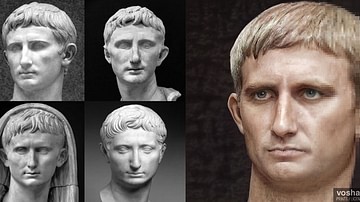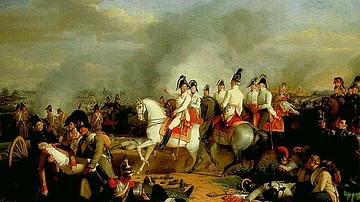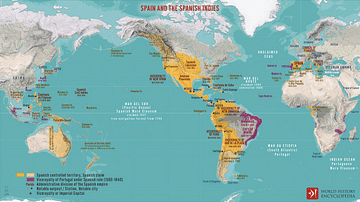Search
Search Results

Image Gallery
Faces of the Roman Empire: From Augustus to Domitian
A series of facial reconstructions of early Roman emperors from the Julio-Claudian dynasty (27 BCE - 68 CE) to the Flavian dynasty (69-96 CE). From the peaceful reign of Augustus (27 BCE - 14 CE), Rome's first emperor, to the chaotic Year...

Collection
Genghis Khan & the Mongol Empire
Through the 13th and 14th century CE the Mongols forged the largest connected empire the world had ever seen and such figures as Genghis Khan and Kublai Khan were feared as the devil himself, their mounted warriors conquering for their leaders...

Article
The Causes of WWI
The origins of the First World War (1914-18) are many and varied, with some even dating back several decades, but a political assassination in the Balkans in the summer of 1914 was the spark that blew up Europe's political powder keg, that...

Article
Battle of Aspern-Essling
The Battle of Aspern-Essling (21-22 May 1809) was a major battle of the Napoleonic Wars (1803-1815). It saw an Austrian army under Archduke Charles defeat a French army led by Emperor Napoleon I (r. 1804-1814; 1815) as it attempted to cross...

Article
Battle of Rivoli
The Battle of Rivoli (14-15 January 1797) was the climactic battle of Napoleon's Italian Campaign of 1796-97. A fourth and final attempt by the Austrian army to relieve the siege of Mantua was thwarted by Napoleon Bonaparte's Army of Italy...

Image
Archduke Franz Ferdinand Prior to His Assassination
A photograph showing Archduke Franz Ferdinand (1863-1914), heir to the Habsburg throne of the Austro-Hungarian Empire, and his wife Countess Sophie Chotek, both seated in the rear of the car during a tour of Sarajevo. The archduke and countess...

Image
Spain and the Spanish Indies
A map illustrating one of the most significant processes of the early modern period - the rise and decline of Spain between the late fifteenth and the late seventeenth centuries. From a patchwork of kingdoms in the north of the Iberian peninsula...

Image
Map of the Old Assyrian Empire - Between Cities & Kingdoms -The Foundations of Imperial Power
This map illustrates the political landscape of the Ancient Near East around c. 1700 BCE, during the Old Assyrian period and shortly before the rise of the Babylonian Empire under Hammurabi (reigned c. 1792–1750 BCE). It highlights key regional...

Image
The Roman Empire and the Crisis of the Third Century, c. 270 CE - Pretenders, Breakaways, Plague, and the Fight for Unity
This map illustrates the fractured state of the Roman Empire in the aftermath of the assassination of Emperor Severus Alexander (reign 222–235 CE) in 235 CE, marking the beginning of the period known as the Crisis of the Third Century. During...

Image
Division of the Byzantine Empire, 1204 CE.
This map illustrates the rise of the Latin Empire (Imperium Romaniae), a Crusader state founded by Western European forces after the Fourth Crusade's sack of Constantinople in 1204. It replaced the Byzantine Empire (Eastern Roman Empire...